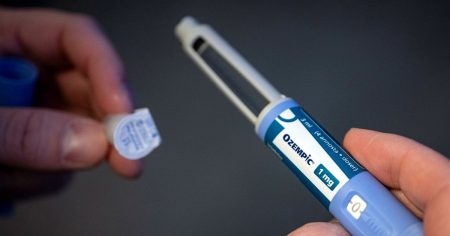Human touch plays a fundamental role in our well-being, fostering feelings of love, validation, security, and comfort. The skin, our largest organ, serves as a conduit for these sensations, transmitting signals of well-being to the brain when we experience physical contact with others. A recent study conducted by researchers at Linköping University in Sweden delved into the intricate relationship between touch and the brain, exploring how six standardized touch patterns influence our neural responses.
The research team, led by Sarah McIntyre, discovered that different types of nerve cells react to distinct aspects of touch. Two specific types of nerve cells proved particularly adept at distinguishing between the six touch patterns. One type, known as rapidly adapting afferents, quickly habituates to sustained touch, ceasing to send signals to the brain. The other type, slowly adapting afferents, continues to transmit signals even during static touch, such as a hand resting on the skin. This finding builds upon previous research from the same group, which identified six common touch patterns used to communicate emotions: love, joy, gratitude, sadness, calming, and attention-seeking.
The current study focused on the sensory receptors in the skin and their role in processing tactile information. Using a technique called microneurography, which involves inserting a fine electrode into the skin, the researchers were able to ”listen” to the activity of individual nerve cells. While a researcher applied the six touch patterns to participants’ forearms, the team monitored the responses of 39 nerve cells of six different types. They found that the two aforementioned types of receptors were particularly effective at differentiating between the touch patterns and relaying this information to the brain, suggesting their importance in understanding nuanced social touch.
The six touch patterns, derived from a 2022 study by the same team, represent distinct ways of conveying emotions through physical contact. Love, for instance, is expressed through a gentle stroking of the arm with fingertips, while calming involves a full-hand stroke along the arm. Joy is conveyed through quick, energetic taps with the fingertips, resembling playful movements. Attention-seeking utilizes repeated tapping, gratitude is communicated through a firm but gentle pat, sometimes akin to a light squeeze, and sadness is expressed through a firm, slow hug or pressure on the arm.
The study was conducted with pairs of individuals who shared close relationships—romantic partners, friends, or family members—ensuring comfort with physical touch. Participants were seated side-by-side, separated by a curtain to prevent visual cues, and instructed to avoid verbal communication. One person in each pair applied the touch patterns to the other’s forearm, attempting to convey specific emotions, while the recipient interpreted the touch. Researchers filmed the interactions, noting the location, duration, speed, and intensity of each touch. They also assessed recipients’ interpretations, both through free-form descriptions and by providing a list of possible emotions.
Furthermore, researchers measured unconscious facial muscle movements elicited by the touch, aiming to identify movements associated with relaxation. While all types of touch generally induced relaxation in recipients, certain patterns elicited smiles and feelings of happiness. Importantly, the study highlighted the subjective nature of touch perception, influenced by individual experiences. A touch perceived as positive by most could be uncomfortable for someone with a history of trauma or abuse. For example, a long stroke, typically interpreted as calming and comforting, might evoke distress in someone who has experienced sexual assault. This emphasizes the importance of individual sensitivity and the potential for touch to be misinterpreted based on personal history.
The researchers’ long-term goal is to understand the complex interplay between touch and pain and to contribute to the development of prosthetics that can interact more seamlessly with the nervous system. This study adds crucial insights into how our nervous systems process tactile information, especially within the context of social interaction. This knowledge has far-reaching implications, potentially leading to advancements in pain management, therapeutic touch therapies, and the development of more sophisticated prosthetic devices that can restore the sense of touch for amputees.














